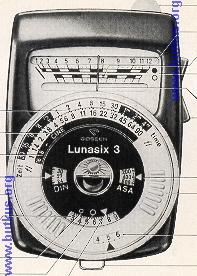The next page contains information on this
light meter.
If the image below looks like your meter,
click below
to see the PDF manual.
The next page also contains information
on
how to donate to this site.
www.PayPal.me/butkus
Venmo @mike-butkus-camera Ph. 2083
Click here for Camera Manual site
Click here for a Gossen LUNASIX3
PDF version of this manual
Click
here for Gossen Lunasix 3 Bedienungsanleitung
Click here for Gossen Lunasix 3s Bedienungsanleitung
Click here for the supplement booklet
CLICK HERE TO CONTINUE TO
Gossen Lunasix 3 HTML MANUAL
